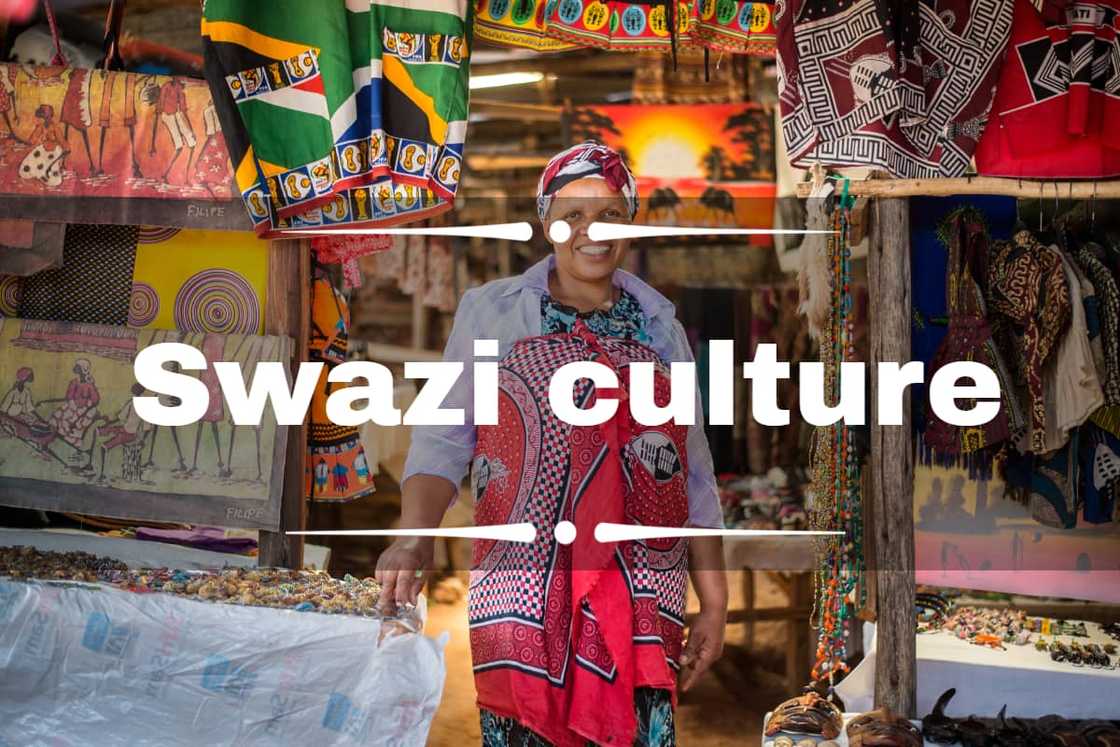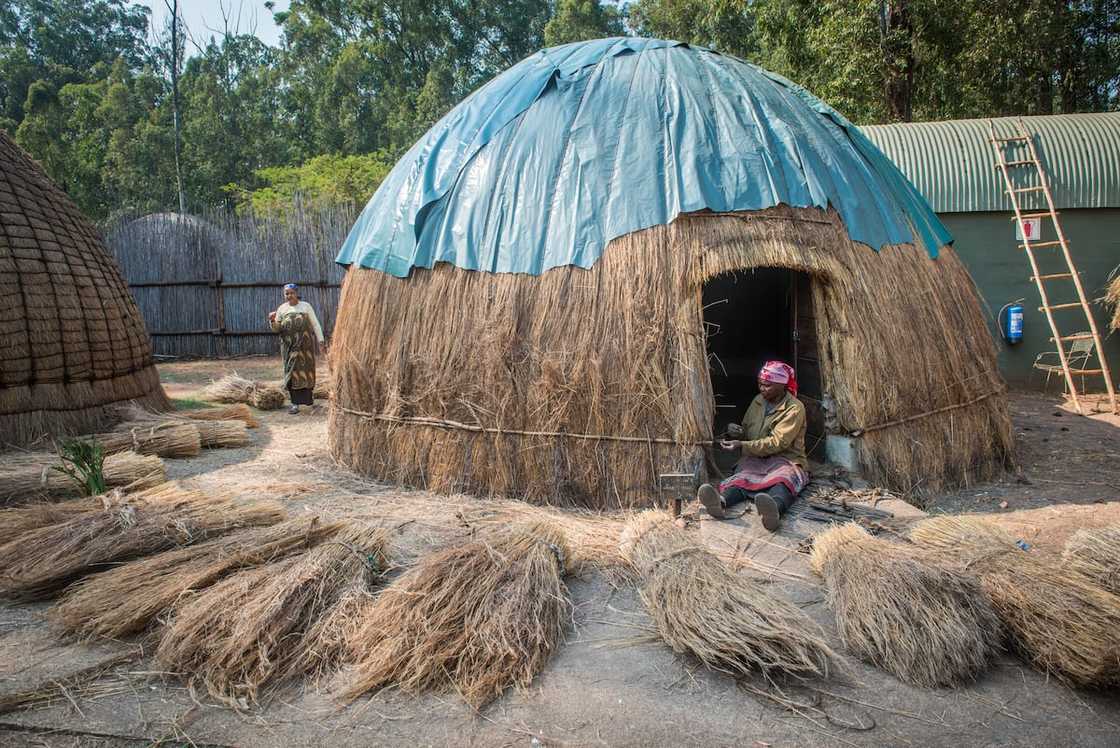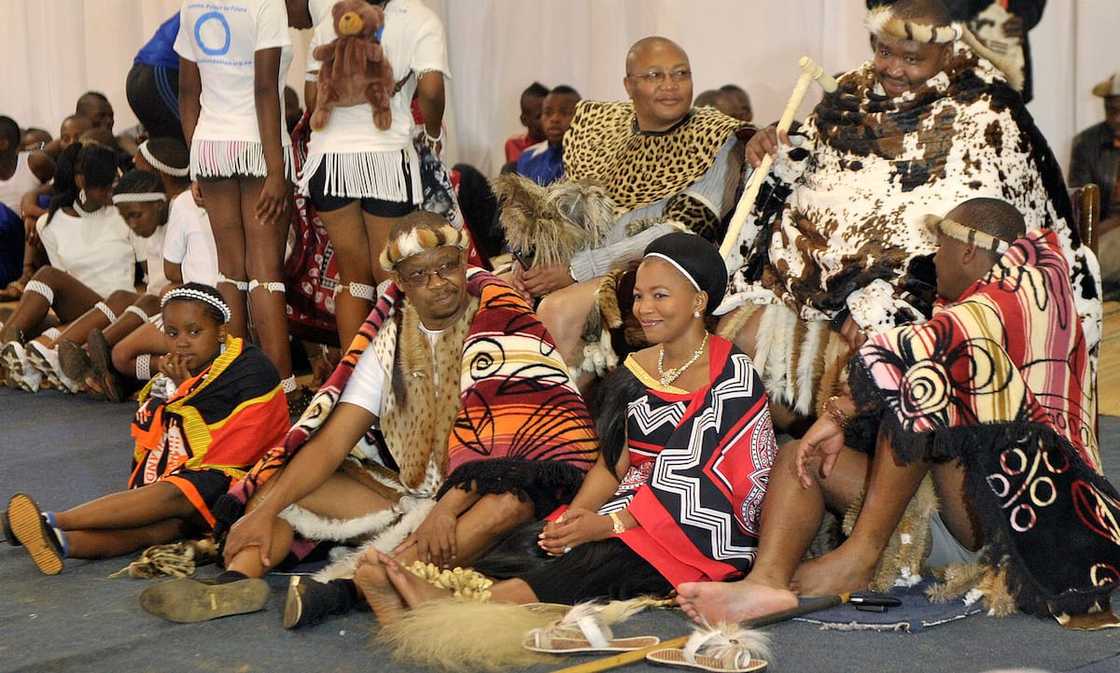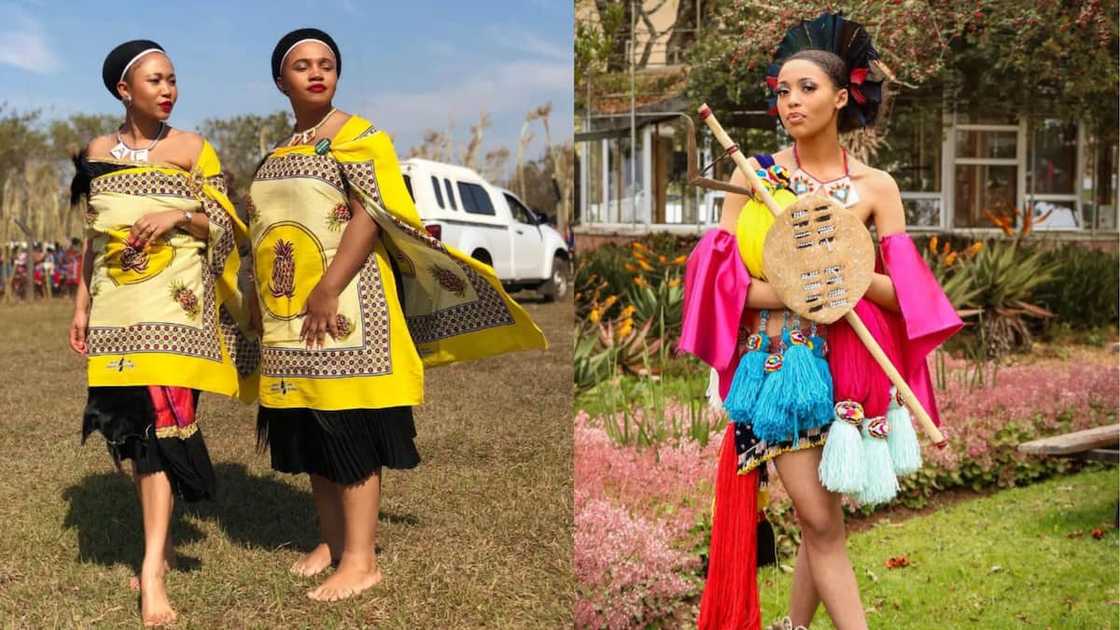The Swazi are Bantu-speaking people who inhabit the tree-studded grasslands of Swaziland.
The Swazi culture is patriarchal, and people from this community are mainly pastoralists and agriculturists.
Did you know there are about 1.81 millionSwazi people?

A happy Eswatini woman in a curio shop. Photo: @Getty ImagesSource: Getty Images
All about the Swazi culture
The history of the Eswatini people dates back to the fifteenth century.
Learn more about the Swazi culture, food, and clothing below.
Archaeologists have found human remains dated 110,000 years old in eastern Swaziland.

Read also
Today, this ethnic group primarily occupies the Kingdom of Swaziland and part of Mozambique.
Language
People from this community speak siSwati or Swati.
The language closely resembles the Zulu language.

Read also
It is one of the elevenofficial languagesof SouthAfrica, meaning people use it for official written communication.
This ethnic group has maintained its beliefs to date.
Ngwane II is known as the community’sfirst king.

Women building traditional Swazi beehive huts. Photo: @Getty ImagesSource: Getty Images
He united the ethnic group and ensured everyone lived in harmony.
Many praise songs were sung in his honour.
The mostwidely known folktalein this community is of this king.

Read also
He has two wives, each blessed with a daughter.
Mulembe was the older daughter and the child of the king’s favourite wife.
She and her mother could do nothing wrong in the King’s eyes.

Read also
The two wore the finest clothes made of the finest fabrics.
On the other hand, Kitila was the King’s second daughter with the other wife.
Kitila and her mom wore common cowhide clothing.

Princess Fikisiwe Dlamini and Khulubuse Zuma in Ludzudzini during their Lobola Ceremony. Photo: @Khaya Ngwenya/City Press/Gallo Images/Getty ImagesSource: Getty Images
Mulembe and Kitila loved each other.
Kitila grew into a lovely and sweet person.
This ethnic group also believes in ancestral spirits calledemadloti, who must be appeased.Emadlotitake many forms.

Read also
They have the power to possess human beings and influence their health.
Today, a significant population of Eswatini people are Christians.
During this period, there is plenty of singing and dancing.

Men in traditional outfits. Photo: @summittoursandsafaris, @challengeministriesswaziland (modified by author)Source: UGC
Once the king has tasted the first fruits, everyone else can enjoy the new growing season.
This event is marked every last Monday of August.
The dance is done to honour the queen mother callediNdlovukazi.

Women in traditional outfits. Photo: @swatidresscode, @swatidresscode (modified by author)Source: UGC
Dancers gather reeds a week before the celebration.
On the D-day, people wear colourful clothing.
The first rite of passage among the Eswatini from Swaziland is birth.

Read also
When a boy attains puberty, he joined hislibutfoor agemates for classes.
Special sessions are organised, where boys learn about manhood and service to the community leaders.
During this period, her mother teaches her about the community’s culture, taboos, and observances.

Read also
Once agreed, the groom’s family pay bridewealth orlobolato the bride’s family.
Thelobolaceremony involves giving cattle, money, and other gifts to the bride’s family.
It is characterised by a lot of singing, dancing, feasting, and ritual wailing.

Read also
After thelobolaceremony, many couples choose to have a Christian wedding.
After death, the body undergoes various rituals.
The social status of the deceased plays a role in how elaborate thefuneral ritualsare, e.g.
the head of the household is traditionally buried by the entrance of the cattle area.
Wife inheritance is calledngenaorlevirate.
Today, thengenatradition is fading away.
Today, many people wear traditional outfits to social functions, e.g., burials and wedding ceremonies.
The traditional Swaziattire for mencomprises a long-sleeved shirt, a long skirt, and a head wrap.
The colourful skirt is covered by a leather apron calledemajobo.
The long white robe they wear is calledlihle.
They accessorise their attire with a neckband calledligcebesha, ties calledumgaco, and a walking stick calledsagibo.
Royal people wear red feathers calledligwalagwala.
Women from this community wear a cloth calledilihhiya.
Married women cover their upper torsos.
They often wear traditional beehive hairstyles.
Single women often wear beads only over their upper torsos during ceremonial occasions.
They mainly grow corn, beans, sorghum, peanuts, and sweet potatoes and keep livestock.
The community also brew traditional beer.
The mostcommon foodsare listed below.
Family life
Swazi people reside in homesteads calledumuti.
Anumutitypically consists of a man, his wife, and children.
Polygamy is not unusual, and a co-wife is calledinhlanti.
All family members share responsibilities and eat from one kitchen.
Homesteads are built using clay, thatch, logs, and rocks.
Traditional homesteads do not have beds or chairs.
They use grass mats instead.
The Eswatini have the SiBhaca dance that is borrowed from theXhosa community.
The dance is performed by men and is characterised by the stomping of feet while chanting.
SiBhaca dance lasts two or three hours.
Women from this community also sing often, especially when working together.
Most of their songs are tributes to various community leaders.
Pottery is the most common art among people from this ethnic community.
Many women also engage in basket weaving.
Men often engage in the woodcarving of functional items such as utensils.
What do Swazi people eat?
Losses deepen at crisis-hit SAS airline
What are Swati known for?
The Eswatini people are known for their elaborateiNcwalaandumhlangaceremonies.iNcwalais the First Fruit Ceremony, whileumhlangaisthe Reed Dance Day.
The Swazi culture is rich and colourful.
People from this community are known for their friendliness, harmonious living, and love for their kinsmen.
The Zulu culture, food, and clothing are pretty distinct.
The community is the largest ethnic community in South Africa, with about nine million people.
He previously worked with Ace My Homework before joining the Briefly team in 2017.
With over 5 years of experience in Briefly, Peter has become a remarkable wordsmith.
She holds a Diploma in Mass Communication and a Bachelors degree in Nutrition and Dietetics from Kenyatta University.
Cyprine joined Briefly.co.za in mid-2021, covering multiple topics, including finance, entertainment, sports, and lifestyle.
In 2023, she finished the AFP course on Digital Investigation Techniques.
She received the Writer of the Year awards in 2023 and 2024.
In 2024, she completed the Google News Initiative course.
Email: cyprineapindi@gmail.com